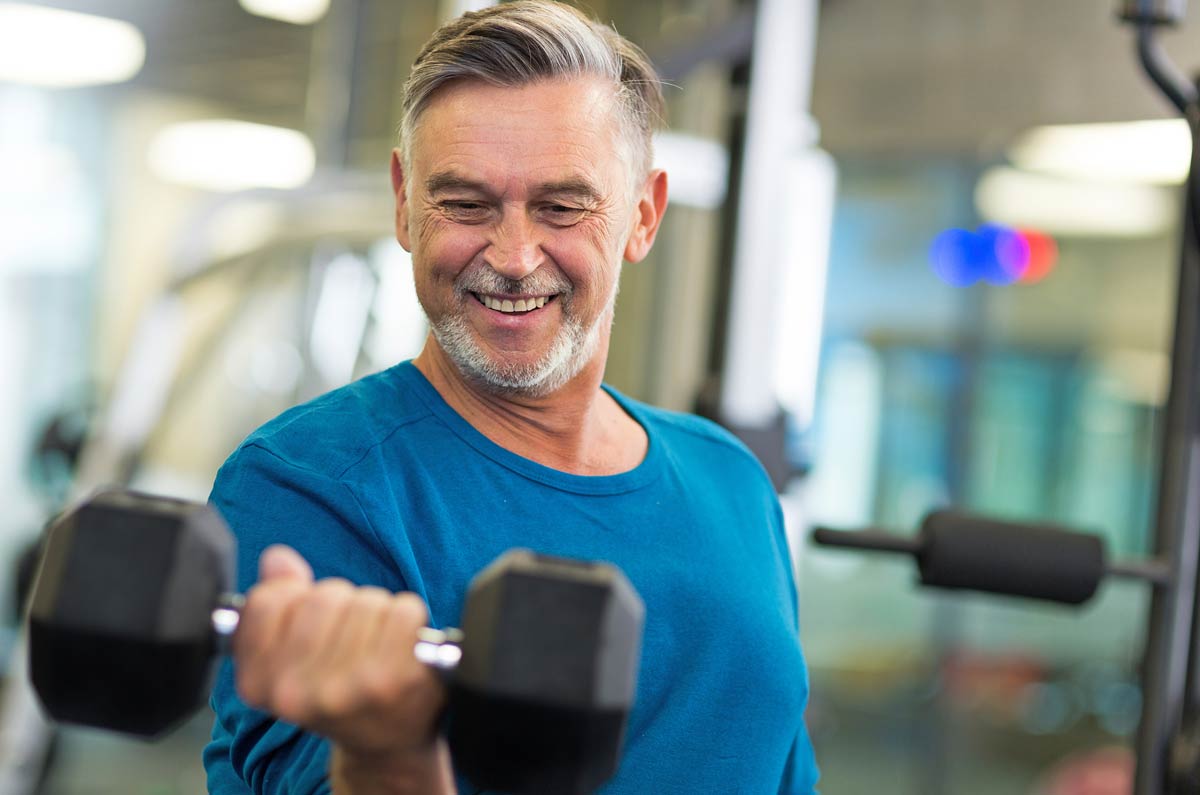How You Can Keep Exercising Through the Years
March 22, 2018

Each birthday brings more candles and additional concerns about staying fit and healthy.
That doesn't mean you should hang up your sneakers, says physical therapist and geriatric specialist Roxanne Pell, PT, MS.
“We need to get tough and stay tough to meet the demands placed on us as we age physically, emotionally and otherwise,” she says.
“If we keep moving, adapt what we are doing to meet our bodies' needs and are willing to be flexible - which sometimes means finding alternative activities if the one we are performing becomes too difficult or painful – we can move successfully into our 40s, 50s, 60s, 70s, 80s and beyond.”
Ideally, people should establish good fitness and nutrition habits in their 20s, Pell says. In reality, however, many people don't consider how the choices they made as young adults could affect them in their middle-age and golden years.
Whether you've never exercised before or you're an aging fitness buff who is slowing down due to injuries or health issues, Pell says you can – and should – exercise.
She offers these 14 tips for adapting your routine at any age:
- Warm up. Spend a few minutes walking on a treadmill, doing jumping jacks (or heel jacks) or, if you're an athlete, mimicking movements you'll use during the match or game. “Our tissues, muscles and joints can't do in our 50s and 60s what they did in our 20s and 30s,” Ms. Pell says.
- Pay attention to form. If necessary, slow down to ensure your body is in proper alignment.
- Be kind to your feet. Wear supportive footwear and replace shoes often.
- Dress appropriately. Don loose, comfortable clothing that's appropriate for the climate to prevent overheating.
- Drink water before, during and after your workout. “As we get older we don't tend to notice thirst as often,” Pell says. “It may be too late when we realize we're thirsty.”
- Eat lean protein. Energy levels sag and muscles atrophy without it. If you don't eat meat, get protein from nuts, legumes, tofu, leafy greens and other sources.
- Move. Cardiovascular exercise can be done daily and it needn't be intense. If you're a newbie, try walking or dancing.
- Balance. “By training and sharpening the components of balance, the risk of falls can decrease dramatically,” Pell says.
- Stay loose. Stretch daily to maintain flexibility and combat tightness and pain.
- Add strength training three to four days a week. This helps preserve muscle mass, which is difficult to regain. Depending on your fitness level, strength training can be done with light hand weights or just your body weight. Consult a physical therapist or certified fitness trainer if you're new to strength training.
- Join a group. Look for programs like Silver Sneakers or community-center classes geared toward older adults.
- Make training adjustments. If you're an avid runner or tennis player finding yourself with more aches and pains than you used to have, consider adding a gentler activity, such as yoga or swimming. “This allows the body to recover from the demands of the more rigorous exercise,” Ms. Pell says. “If injured, they may have to make some hard decisions as they recover as to whether they can return to those sports or choose something less stressful.”
- Cool down gradually.
- Embrace employee wellness programs. If your workplace offers free or reduced-cost exercise, health and weight-loss classes – or addresses occupational injury risks – take advantage of these. “Any activity that involves prolonged postures over extended periods puts us at risk for injury,” she says. “Desk jobs as well as labor jobs can involve repetitive positions or movement patterns.”
Related Links
The highly trained rehabilitation specialists at University Hospitals help people of all ages regain independence, function and confidence after an illness or injury. Experienced physical therapists, occupational therapists, speech-language pathologists and other providers work one-on-one with each patient to help them reach their personal goals and improve activities of daily living. Learn more about rehabilitation services at University Hospitals.


